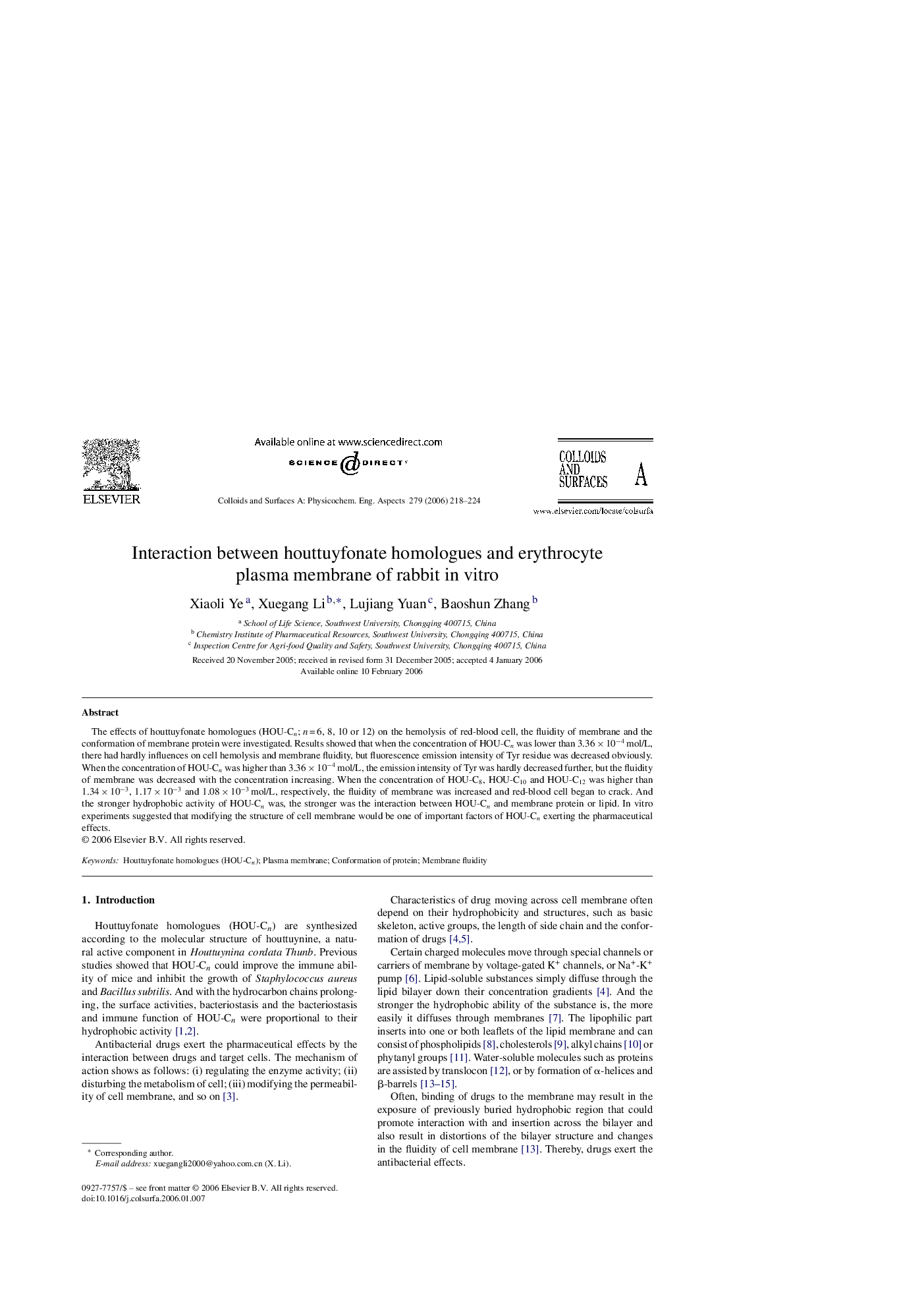| Article ID | Journal | Published Year | Pages | File Type |
|---|---|---|---|---|
| 598449 | Colloids and Surfaces A: Physicochemical and Engineering Aspects | 2006 | 7 Pages |
The effects of houttuyfonate homologues (HOU-Cn; n = 6, 8, 10 or 12) on the hemolysis of red-blood cell, the fluidity of membrane and the conformation of membrane protein were investigated. Results showed that when the concentration of HOU-Cn was lower than 3.36 × 10−4 mol/L, there had hardly influences on cell hemolysis and membrane fluidity, but fluorescence emission intensity of Tyr residue was decreased obviously. When the concentration of HOU-Cn was higher than 3.36 × 10−4 mol/L, the emission intensity of Tyr was hardly decreased further, but the fluidity of membrane was decreased with the concentration increasing. When the concentration of HOU-C8, HOU-C10 and HOU-C12 was higher than 1.34 × 10−3, 1.17 × 10−3 and 1.08 × 10−3 mol/L, respectively, the fluidity of membrane was increased and red-blood cell began to crack. And the stronger hydrophobic activity of HOU-Cn was, the stronger was the interaction between HOU-Cn and membrane protein or lipid. In vitro experiments suggested that modifying the structure of cell membrane would be one of important factors of HOU-Cn exerting the pharmaceutical effects.
